Weiwei Yang
Interpretable Language Modeling via Induction-head Ngram Models
Oct 31, 2024


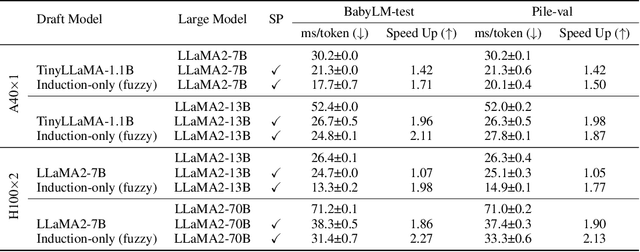
Abstract:Recent large language models (LLMs) have excelled across a wide range of tasks, but their use in high-stakes and compute-limited settings has intensified the demand for interpretability and efficiency. We address this need by proposing Induction-head ngram models (Induction-Gram), a method that builds an efficient, interpretable LM by bolstering modern ngram models with a hand-engineered "induction head". This induction head uses a custom neural similarity metric to efficiently search the model's input context for potential next-word completions. This process enables Induction-Gram to provide ngram-level grounding for each generated token. Moreover, experiments show that this simple method significantly improves next-word prediction over baseline interpretable models (up to 26%p) and can be used to speed up LLM inference for large models through speculative decoding. We further study Induction-Gram in a natural-language neuroscience setting, where the goal is to predict the next fMRI response in a sequence. It again provides a significant improvement over interpretable models (20% relative increase in the correlation of predicted fMRI responses), potentially enabling deeper scientific investigation of language selectivity in the brain. The code is available at https://github.com/ejkim47/induction-gram.
Iterative Self-Tuning LLMs for Enhanced Jailbreaking Capabilities
Oct 24, 2024



Abstract:Recent research has shown that Large Language Models (LLMs) are vulnerable to automated jailbreak attacks, where adversarial suffixes crafted by algorithms appended to harmful queries bypass safety alignment and trigger unintended responses. Current methods for generating these suffixes are computationally expensive and have low Attack Success Rates (ASR), especially against well-aligned models like Llama2 and Llama3. To overcome these limitations, we introduce ADV-LLM, an iterative self-tuning process that crafts adversarial LLMs with enhanced jailbreak ability. Our framework significantly reduces the computational cost of generating adversarial suffixes while achieving nearly 100\% ASR on various open-source LLMs. Moreover, it exhibits strong attack transferability to closed-source models, achieving 99% ASR on GPT-3.5 and 49% ASR on GPT-4, despite being optimized solely on Llama3. Beyond improving jailbreak ability, ADV-LLM provides valuable insights for future safety alignment research through its ability to generate large datasets for studying LLM safety. Our code is available at: https://github.com/SunChungEn/ADV-LLM
Fast and Reliable $N-k$ Contingency Screening with Input-Convex Neural Networks
Oct 01, 2024



Abstract:Power system operators must ensure that dispatch decisions remain feasible in case of grid outages or contingencies to prevent cascading failures and ensure reliable operation. However, checking the feasibility of all $N - k$ contingencies -- every possible simultaneous failure of $k$ grid components -- is computationally intractable for even small $k$, requiring system operators to resort to heuristic screening methods. Because of the increase in uncertainty and changes in system behaviors, heuristic lists might not include all relevant contingencies, generating false negatives in which unsafe scenarios are misclassified as safe. In this work, we propose to use input-convex neural networks (ICNNs) for contingency screening. We show that ICNN reliability can be determined by solving a convex optimization problem, and by scaling model weights using this problem as a differentiable optimization layer during training, we can learn an ICNN classifier that is both data-driven and has provably guaranteed reliability. Namely, our method can ensure a zero false negative rate. We empirically validate this methodology in a case study on the IEEE 39-bus test network, observing that it yields substantial (10-20x) speedups while having excellent classification accuracy.
Binary Code Summarization: Benchmarking ChatGPT/GPT-4 and Other Large Language Models
Dec 15, 2023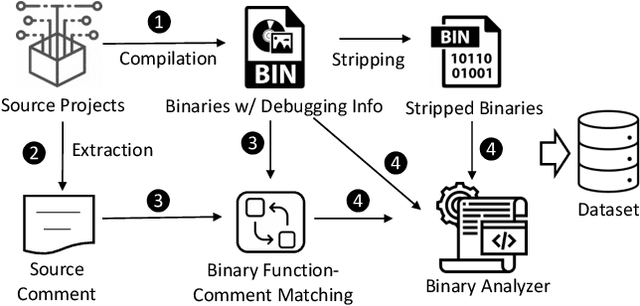

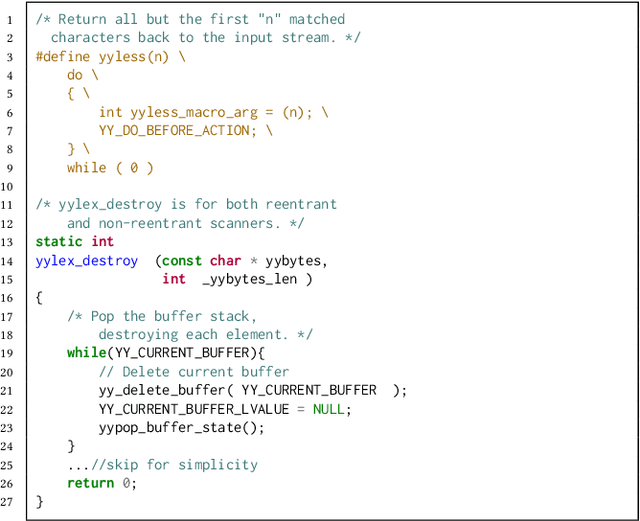

Abstract:Binary code summarization, while invaluable for understanding code semantics, is challenging due to its labor-intensive nature. This study delves into the potential of large language models (LLMs) for binary code comprehension. To this end, we present BinSum, a comprehensive benchmark and dataset of over 557K binary functions and introduce a novel method for prompt synthesis and optimization. To more accurately gauge LLM performance, we also propose a new semantic similarity metric that surpasses traditional exact-match approaches. Our extensive evaluation of prominent LLMs, including ChatGPT, GPT-4, Llama 2, and Code Llama, reveals 10 pivotal insights. This evaluation generates 4 billion inference tokens, incurred a total expense of 11,418 US dollars and 873 NVIDIA A100 GPU hours. Our findings highlight both the transformative potential of LLMs in this field and the challenges yet to be overcome.
A Statistical Turing Test for Generative Models
Sep 16, 2023

Abstract:The emergence of human-like abilities of AI systems for content generation in domains such as text, audio, and vision has prompted the development of classifiers to determine whether content originated from a human or a machine. Implicit in these efforts is an assumption that the generation properties of a human are different from that of the machine. In this work, we provide a framework in the language of statistical pattern recognition that quantifies the difference between the distributions of human and machine-generated content conditioned on an evaluation context. We describe current methods in the context of the framework and demonstrate how to use the framework to evaluate the progression of generative models towards human-like capabilities, among many axes of analysis.
Approximately optimal domain adaptation with Fisher's Linear Discriminant Analysis
Mar 14, 2023



Abstract:We propose a class of models based on Fisher's Linear Discriminant (FLD) in the context of domain adaptation. The class is the convex combination of two hypotheses: i) an average hypothesis representing previously seen source tasks and ii) a hypothesis trained on a new target task. For a particular generative setting we derive the optimal convex combination of the two models under 0-1 loss, propose a computable approximation, and study the effect of various parameter settings on the relative risks between the optimal hypothesis, hypothesis i), and hypothesis ii). We demonstrate the effectiveness of the proposed optimal classifier in the context of EEG- and ECG-based classification settings and argue that the optimal classifier can be computed without access to direct information from any of the individual source tasks. We conclude by discussing further applications, limitations, and possible future directions.
Efficient Reinforcement Learning Through Trajectory Generation
Dec 01, 2022



Abstract:A key barrier to using reinforcement learning (RL) in many real-world applications is the requirement of a large number of system interactions to learn a good control policy. Off-policy and Offline RL methods have been proposed to reduce the number of interactions with the physical environment by learning control policies from historical data. However, their performances suffer from the lack of exploration and the distributional shifts in trajectories once controllers are updated. Moreover, most RL methods require that all states are directly observed, which is difficult to be attained in many settings. To overcome these challenges, we propose a trajectory generation algorithm, which adaptively generates new trajectories as if the system is being operated and explored under the updated control policies. Motivated by the fundamental lemma for linear systems, assuming sufficient excitation, we generate trajectories from linear combinations of historical trajectories. For linear feedback control, we prove that the algorithm generates trajectories with the exact distribution as if they are sampled from the real system using the updated control policy. In particular, the algorithm extends to systems where the states are not directly observed. Experiments show that the proposed method significantly reduces the number of sampled data needed for RL algorithms.
Energy Efficient Design in IRS-Assisted UAV Data Collection System under Malicious Jamming
Aug 31, 2022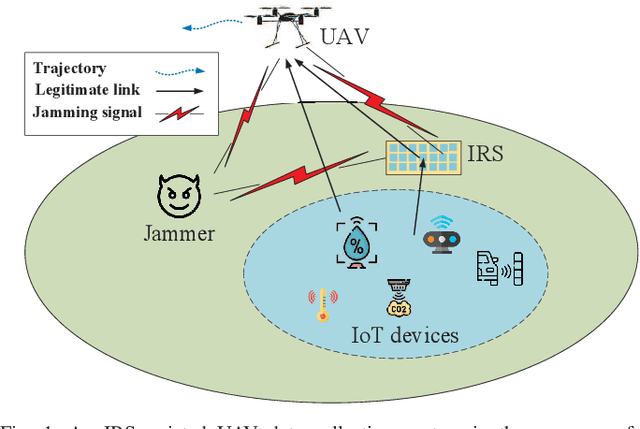
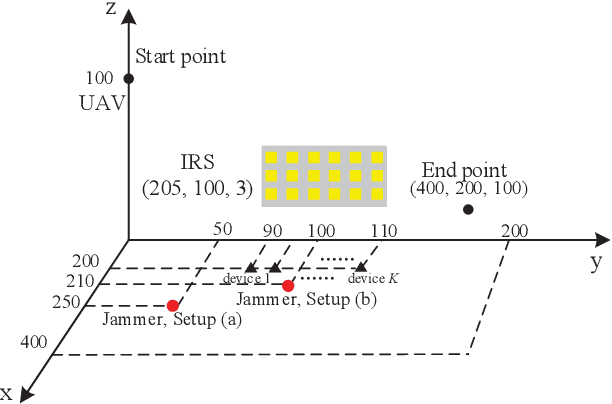
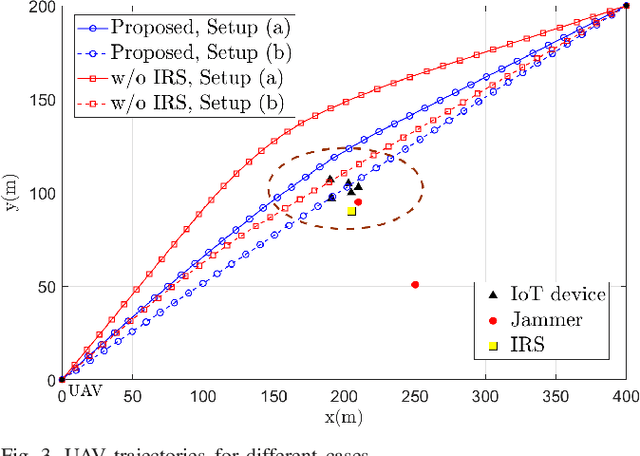

Abstract:In this paper, we study an unmanned aerial vehicle (UAV) enabled data collection system, where an intelligent reflecting surface (IRS) is deployed to assist in the communication from a cluster of Internet-of-Things (IoT) devices to a UAV in the presence of a jammer. We aim to improve the energy efficiency (EE) via the joint design of UAV trajectory, IRS passive beamforming, device power allocation, and communication scheduling. However, the formulated non-linear fractional programming problem is challenging to solve due to its non-convexity and coupled variables. To overcome the difficulty, we propose an alternating optimization based algorithm to solve it sub-optimally by leveraging Dinkelbach's algorithm, successive convex approximation (SCA) technique, and block coordinate descent (BCD) method. Extensive simulation results show that the proposed design can significantly improve the anti-jamming performance. In particular, for the remote jammer case, the proposed design can largely shorten the flight path and thus decrease the energy consumption via the signal enhancement; while for the local jammer case, which is deemed highly challenging in conventional systems without IRS since the retreating away strategy becomes ineffective, our proposed design even achieves a higher performance gain owing to the efficient jamming signal mitigation.
Deep Learning with Label Noise: A Hierarchical Approach
May 28, 2022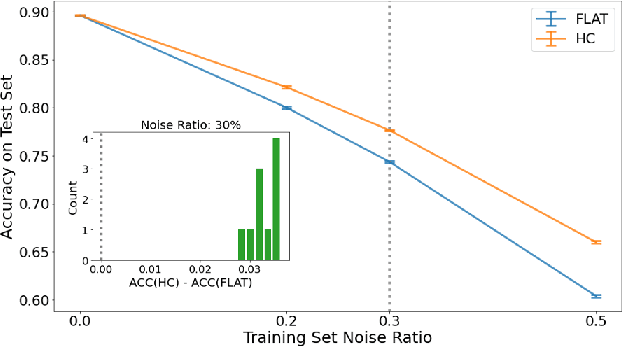
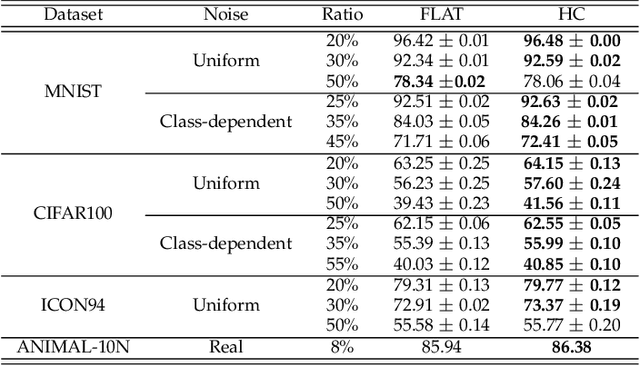
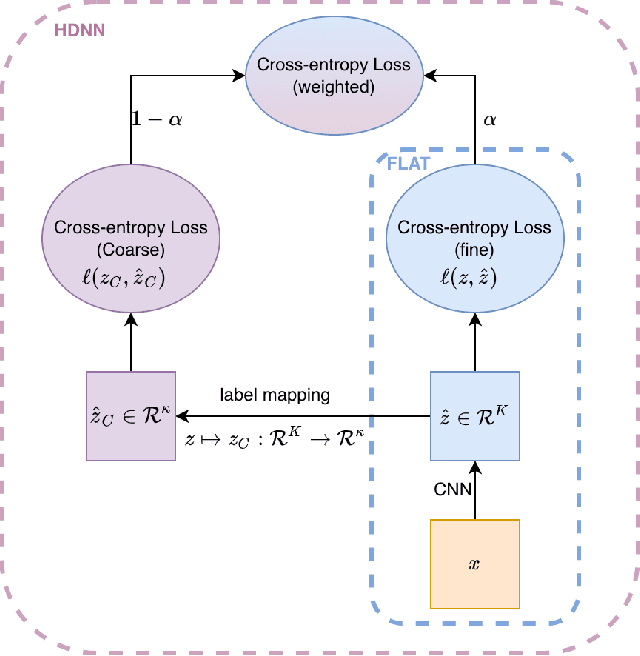
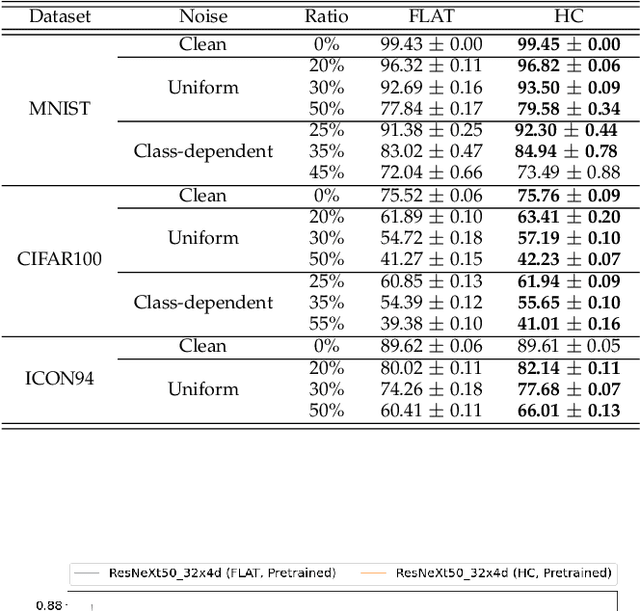
Abstract:Deep neural networks are susceptible to label noise. Existing methods to improve robustness, such as meta-learning and regularization, usually require significant change to the network architecture or careful tuning of the optimization procedure. In this work, we propose a simple hierarchical approach that incorporates a label hierarchy when training the deep learning models. Our approach requires no change of the network architecture or the optimization procedure. We investigate our hierarchical network through a wide range of simulated and real datasets and various label noise types. Our hierarchical approach improves upon regular deep neural networks in learning with label noise. Combining our hierarchical approach with pre-trained models achieves state-of-the-art performance in real-world noisy datasets.
Mental State Classification Using Multi-graph Features
Feb 25, 2022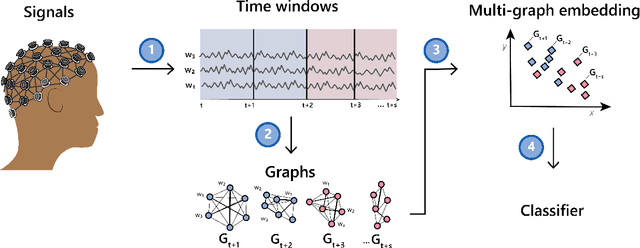
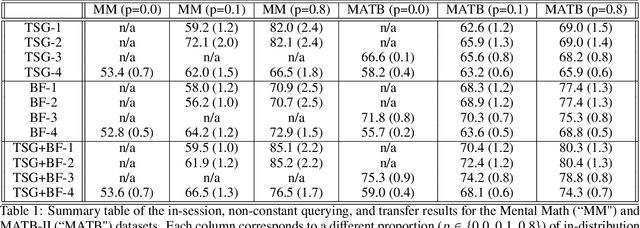
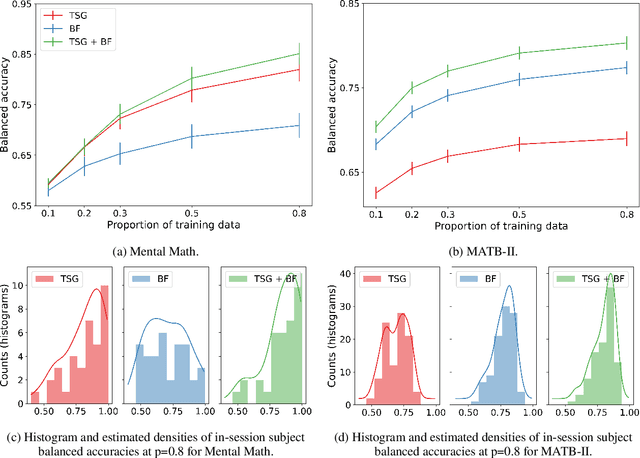
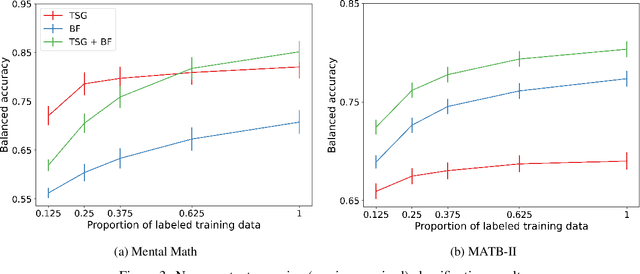
Abstract:We consider the problem of extracting features from passive, multi-channel electroencephalogram (EEG) devices for downstream inference tasks related to high-level mental states such as stress and cognitive load. Our proposed method leverages recently developed multi-graph tools and applies them to the time series of graphs implied by the statistical dependence structure (e.g., correlation) amongst the multiple sensors. We compare the effectiveness of the proposed features to traditional band power-based features in the context of three classification experiments and find that the two feature sets offer complementary predictive information. We conclude by showing that the importance of particular channels and pairs of channels for classification when using the proposed features is neuroscientifically valid.
 Add to Chrome
Add to Chrome Add to Firefox
Add to Firefox Add to Edge
Add to Edge